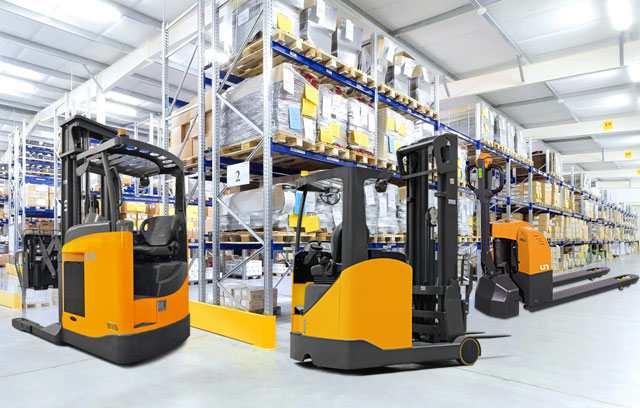The hydraulic system of an rough terrain forklift is usually designed to be easy to inspect and maintain, but this depends on its specific design and manufacturing quality. First of all, the inspection points of the hydraulic system are usually concentrated and clearly marked, which makes it easy for the operator to quickly check the hydraulic oil level, pressure and whether the system is operating normally in daily use.
In order to ensure the long-term stability of the system, the replacement cycle of the hydraulic oil is usually regular. Depending on the frequency of use and environmental conditions, the operator can check the oil condition regularly according to the manufacturer's recommendations. The color, viscosity and cleanliness of the hydraulic oil are important inspection indicators. If the oil is deteriorated or contains too many impurities, it needs to be replaced in time. Most rough terrain forklifts are equipped with hydraulic oil filling ports to facilitate operators to replenish or replace them daily.
The components of the hydraulic system, such as oil pumps, hydraulic cylinders, pipes and valves, are usually carefully arranged to ensure that they are in places with less external contact to reduce the impact of the external environment on the hydraulic system. Therefore, the maintenance of the hydraulic system is relatively simple, especially for forklifts designed with good protection measures, these components are not easily susceptible to external physical damage.
The hydraulic system of an rough terrain forklift is usually equipped with monitoring tools such as oil filters and pressure gauges to help operators monitor the status of the hydraulic system in real time. The oil filter can effectively filter impurities in the hydraulic oil to prevent it from entering the system and causing damage. The pressure gauge can reflect the pressure status of the hydraulic system in real time. If there is an abnormal fluctuation, the operator can find the problem in time and deal with it.
For daily maintenance, hydraulic pipes and joints are areas that need special attention. Operators should regularly check whether the pipe connections are loose or leaking, and ensure that the seals of all joints are intact. If an oil leak is found, it should be repaired immediately to avoid oil leakage and further damage. The sealing of the hydraulic system is very important. Regularly checking the status of each joint and hose can effectively prevent leakage.
Although the design and maintenance of the hydraulic system are relatively simple, the hydraulic system of the rough terrain forklift may experience additional wear in harsh environments, such as high temperature, heavy load operation or dusty working conditions. In order to ensure the optimal condition of the hydraulic system, the operator needs to perform frequent inspections and proper maintenance according to the specific working environment. Especially when operating under high load, the temperature and oil pressure of the hydraulic system often fluctuate greatly. Timely detection of potential problems is crucial to extending the life of the equipment.
- Home
- About
-
Product
-

IC Forklift
Ranges
-

Electric Forklift
Ranges
-

Warehouse Equipment
Ranges
-
- CUSTOMER CARE
- INDUSTRY SOLUTION
- News
- Contact








 中文简体
中文简体 عربى
عربى Español
Español














